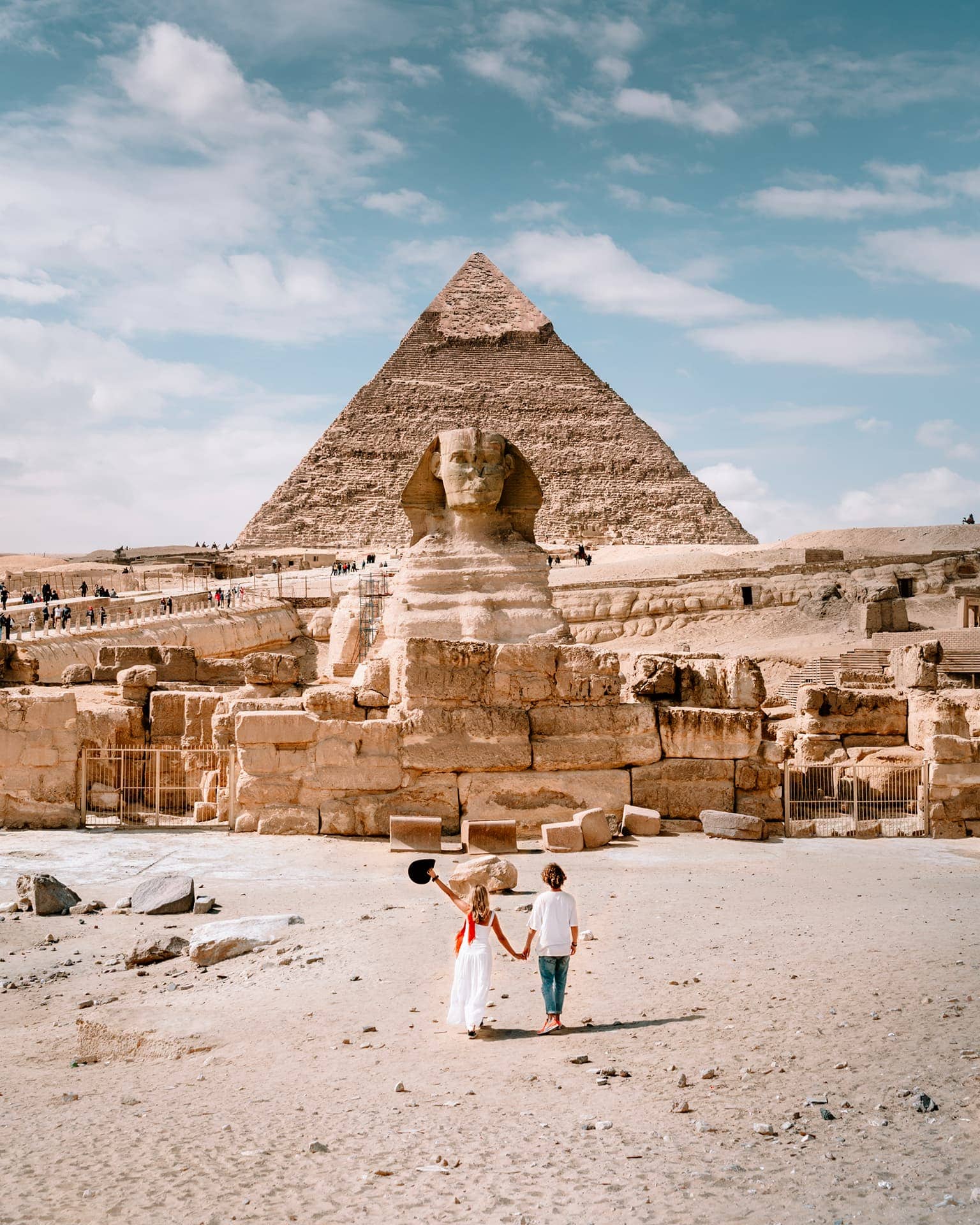The Pyramid of Unas, situated in the vast necropolis of Saqqara near Cairo, Egypt, is a captivating testament to the ingenuity, spirituality, and cultural legacy of ancient Egyptian civilization. Built during the Fifth Dynasty of the Old Kingdom around 2350 BCE, this majestic pyramid served as the eternal resting place for Pharaoh Unas, the ninth and final ruler of his dynasty.
Despite being smaller in scale compared to its more renowned counterparts, such as the Great Pyramid of Giza, the Pyramid of Unas is distinguished by its historical significance and architectural innovation. Rising approximately 43 meters above the desert sands, its imposing presence commands attention, offering visitors a glimpse into the ancient world of pharaonic Egypt.
Constructed with precision using massive limestone blocks, the Pyramid of Unas features a classic pyramidal design, with smooth, sloping sides that converge at a pointed apex. Though millennia have passed since its construction, the pyramid retains much of its original form, a testament to the advanced engineering skills of ancient Egyptian architects and laborers.
Venturing inside the Pyramid of Unas reveals a network of passageways and chambers, designed to safeguard the pharaoh's mortal remains and facilitate his journey to the afterlife. The descending corridor leads to a series of chambers, including the burial chamber where Pharaoh Unas's sarcophagus once rested. Despite centuries of looting, the pyramid still holds mysteries waiting to be uncovered by modern archaeologists.
However, the true marvel of the Pyramid of Unas lies within its inner chambers, where the walls are adorned with a mesmerizing array of hieroglyphic inscriptions known as the Pyramid Texts. These ancient religious texts, dating back over four millennia, comprise a collection of spells, prayers, and rituals intended to guide the deceased pharaoh through the perilous journey of the afterlife. Carved into the stone walls, these texts provide unparalleled insight into the beliefs, myths, and cosmology of ancient Egyptian religion.
The Pyramid Texts found within the Pyramid of Unas represent the oldest known religious texts in human history and offer a fascinating glimpse into the spiritual worldview of the ancient Egyptians. They reveal a complex system of beliefs surrounding death, resurrection, and the divine kingship of the pharaoh, underscoring the central role of religion in ancient Egyptian society.
Today, the Pyramid of Unas stands as a symbol of Egypt's rich cultural heritage, drawing visitors from around the world to marvel at its ancient splendor and ponder the mysteries of the past. As the sun sets over the desert horizon, casting golden hues upon the pyramid's weathered facade, it serves as a silent testament to the enduring legacy of one of the world's greatest civilizations.
 English
English











